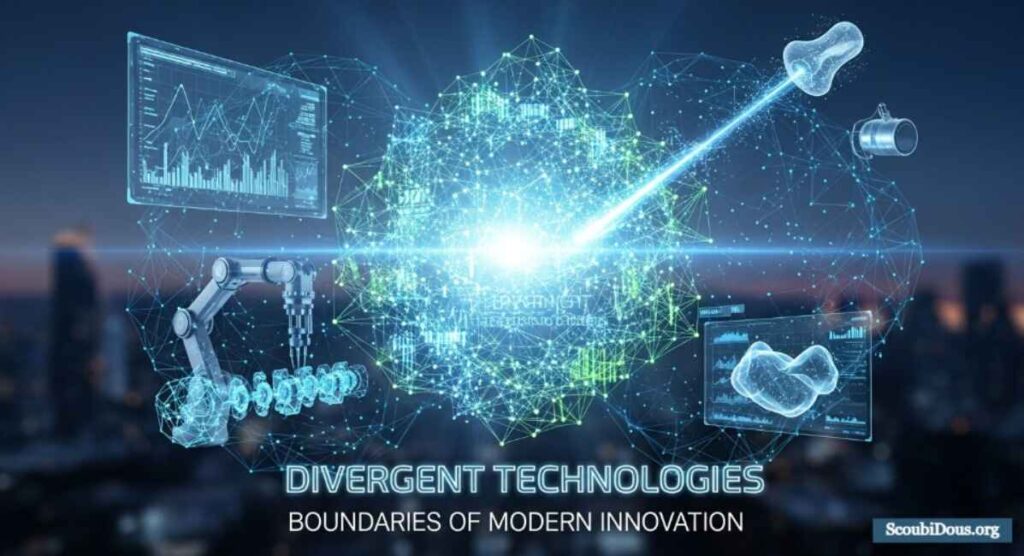Introduction
In today’s rapidly evolving digital world, innovation thrives on divergence—the ability to think differently, challenge conventional wisdom, and integrate technologies that cross traditional boundaries.
Divergent technologies represent this very principle: they combine distinct fields such as artificial intelligence, biotechnology, nanotechnology, and quantum computing to create groundbreaking advancements that reshape industries and redefine human potential.
From personalized healthcare to autonomous vehicles and sustainable energy systems, divergent technologies are not just changing how we live—they are rewriting the rules of progress.
This article explores what divergent technologies are, how they work, their applications across industries, and the transformative role they play in shaping the future.
What Are Divergent Technologies?
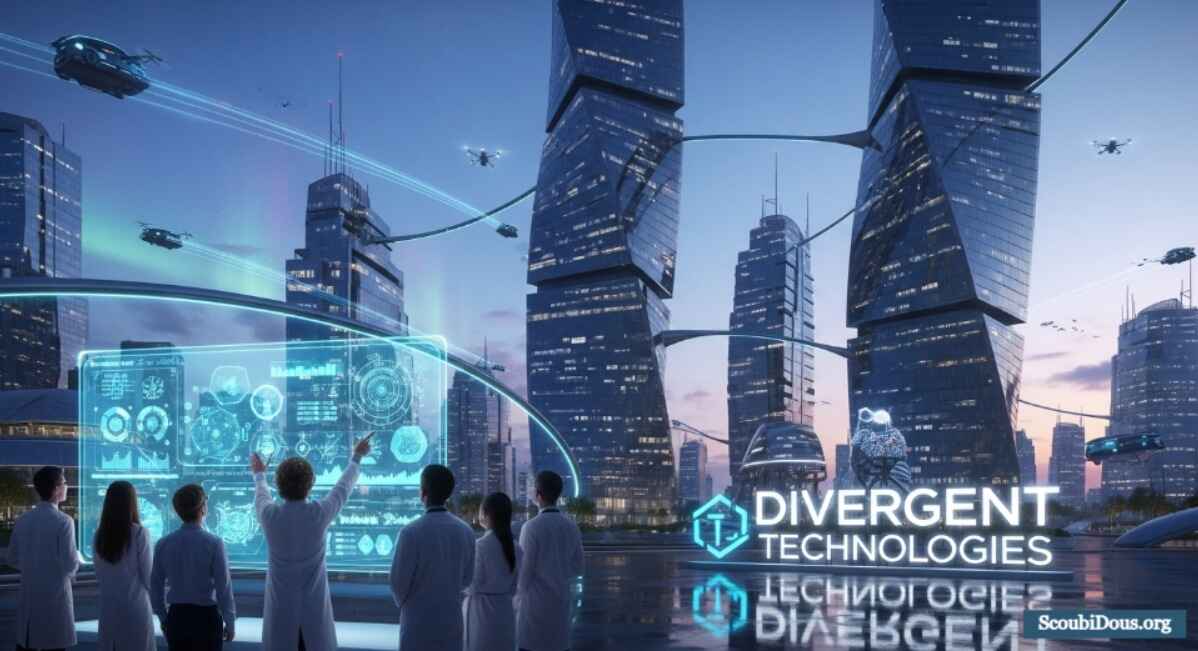
The term divergent technologies refers to innovative systems or tools that stem from multiple disciplines converging to produce entirely new functionalities. Unlike conventional or incremental technologies that improve existing processes, divergent technologies often disrupt industries by offering novel solutions.
In essence, they are the intersection of creativity, science, and advanced engineering, giving rise to innovations that cannot emerge from a single domain.
Key Characteristics of Divergent Technologies
- Interdisciplinary Nature: They combine insights from various fields—AI, robotics, materials science, and more.
- High Innovation Potential: They produce new markets and transform existing ones.
- Scalability: Designed to adapt and integrate into multiple sectors.
- Sustainability Focus: Many aim to address global issues like energy efficiency and healthcare access.
- Adaptability: These technologies evolve rapidly with advancements in data, computing, and material sciences.
The Evolution of Divergent Technologies
The concept of divergence in technology has evolved over decades. Early examples include the merging of mechanical systems with computing, leading to the digital revolution. In the 21st century, this convergence has expanded dramatically, blending machine learning, genomics, IoT, and quantum mechanics into cohesive systems that work synergistically.
Let’s explore how this evolution has unfolded:
| Era | Key Development | Impact |
| 1950s–1980s | Computer and automation revolution | Foundation for digital systems |
| 1990s–2000s | Internet and mobile connectivity | Global access to data and communication |
| 2010s–2020s | AI, IoT, and biotech convergence | Intelligent, interconnected ecosystems |
| 2020s–Future | Quantum and nanotech integration | Redefining computing, energy, and materials |
Major Fields Driving Divergent Technologies
1. Artificial Intelligence (AI) and Machine Learning (ML)
AI and ML form the backbone of many divergent technologies. They enable automation, pattern recognition, and predictive modeling in industries ranging from finance to healthcare. When combined with other fields—like genetics or material science—AI systems amplify innovation by delivering intelligent decision-making and self-learning capabilities.
Example: AI-assisted drug discovery accelerates the identification of new therapeutic compounds by integrating biology and computational models.
2. Biotechnology
Biotechnology has progressed from laboratory research to industrial applications that reshape agriculture, medicine, and energy. When merged with data analytics and nanotechnology, biotech becomes a core driver of divergent innovation.
Example: CRISPR gene-editing technology, when paired with AI data models, enhances precision in genetic modifications for disease prevention.
3. Quantum Computing
Quantum computing represents the next frontier of divergent technology. By leveraging the principles of quantum mechanics, it promises to revolutionize cryptography, simulations, and optimization problems far beyond the reach of traditional computers.
Example: In materials science, quantum simulations help design stronger and more sustainable materials at the atomic level.
4. Nanotechnology
Nanotechnology operates at the molecular scale, enabling the creation of materials and devices with extraordinary properties. Combined with biotechnology and AI, nanotech is fostering innovations in energy storage, medicine, and environmental sustainability.
Example: Smart nanomaterials that self-repair or adapt to environmental conditions represent the practical application of divergent technological design.
5. Renewable Energy and Environmental Tech
Divergent technologies are transforming how we produce, store, and consume energy. By integrating AI-driven analytics, smart grids, and clean materials, renewable energy systems are becoming more efficient and sustainable.
Example: AI-optimized solar panels that adjust their angles for maximum sunlight exposure combine data intelligence and physical engineering.
Applications of Divergent Technologies Across Industries
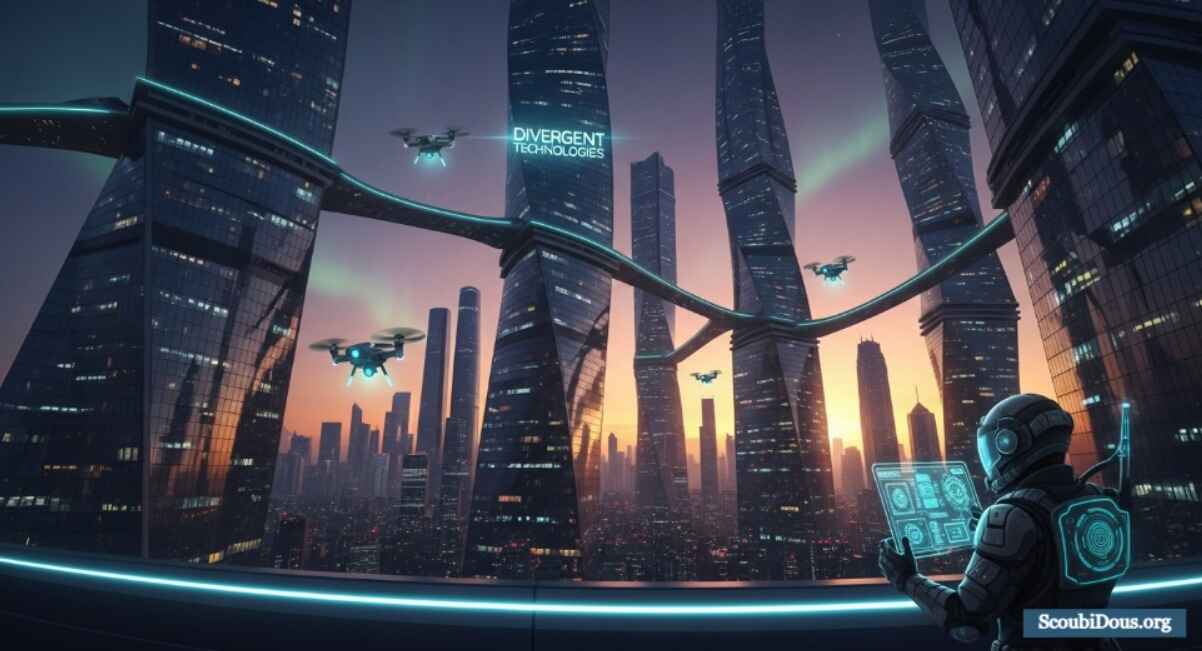
1. Healthcare and Medicine
- Precision Medicine: Combines genetic data, AI algorithms, and patient history for personalized treatment.
- Wearable Health Tech: Uses nanotech and IoT sensors for real-time health monitoring.
- Bioprinting: Integrates robotics and cellular biology to print tissues and organs.
2. Manufacturing and Industry 4.0
- Smart Factories: Merging robotics, IoT, and data analytics for efficient production.
- Predictive Maintenance: AI systems forecast machinery failures, reducing downtime.
- Sustainable Materials: Nanotech develops lightweight yet durable industrial materials.
3. Transportation and Mobility
- Autonomous Vehicles: Fusion of sensors, AI, and computing to enable self-driving cars.
- Smart Logistics: AI-powered routing systems that optimize delivery efficiency.
- Electric Aviation: Combining advanced materials and renewable power systems.
4. Education and Learning
- Adaptive Learning Platforms: AI-driven tools that tailor educational content to learners’ needs.
- Virtual and Augmented Reality (VR/AR): Integrating neuroscience and digital tech to enhance learning experiences.
5. Defense and Security
- AI Surveillance Systems: Combining image recognition and real-time analytics for public safety.
- Quantum Encryption: Secure communication powered by quantum computing.
- Autonomous Drones: Integration of robotics and AI for defense intelligence.
Benefits of Embracing Divergent Technologies
- Accelerated Innovation: Encourages cross-industry collaboration and creativity.
- Enhanced Efficiency: Automates complex tasks while improving accuracy.
- Economic Growth: Drives new markets, startups, and research funding.
- Sustainability: Develops eco-friendly solutions for global challenges.
- Human Empowerment: Expands capabilities in education, health, and accessibility.
Challenges Facing Divergent Technologies
While the potential is immense, these technologies face several challenges:
- Ethical Concerns: Data privacy, genetic manipulation, and AI bias remain key issues.
- High Costs: Research and development require substantial financial investment.
- Regulatory Gaps: Laws often lag behind rapid innovation.
- Skill Shortages: Demand for interdisciplinary expertise exceeds current education systems.
- Security Risks: Interconnected systems increase vulnerability to cyber threats.
The Future Outlook of Divergent Technologies
The future of divergent technologies is characterized by integration, intelligence, and inclusion. As AI and quantum computing mature, industries will see unprecedented collaboration across science, technology, and human creativity.
Predicted Trends:
- AI-Driven Research Automation
- Quantum Cloud Services for Enterprises
- Biohybrid Devices and Neural Interfaces
- Sustainable Nanomaterials for Construction and Energy
- Human-Machine Symbiosis in Workplaces
These developments will not only transform industries but redefine how humanity interacts with technology itself.
Actionable Insights for Businesses
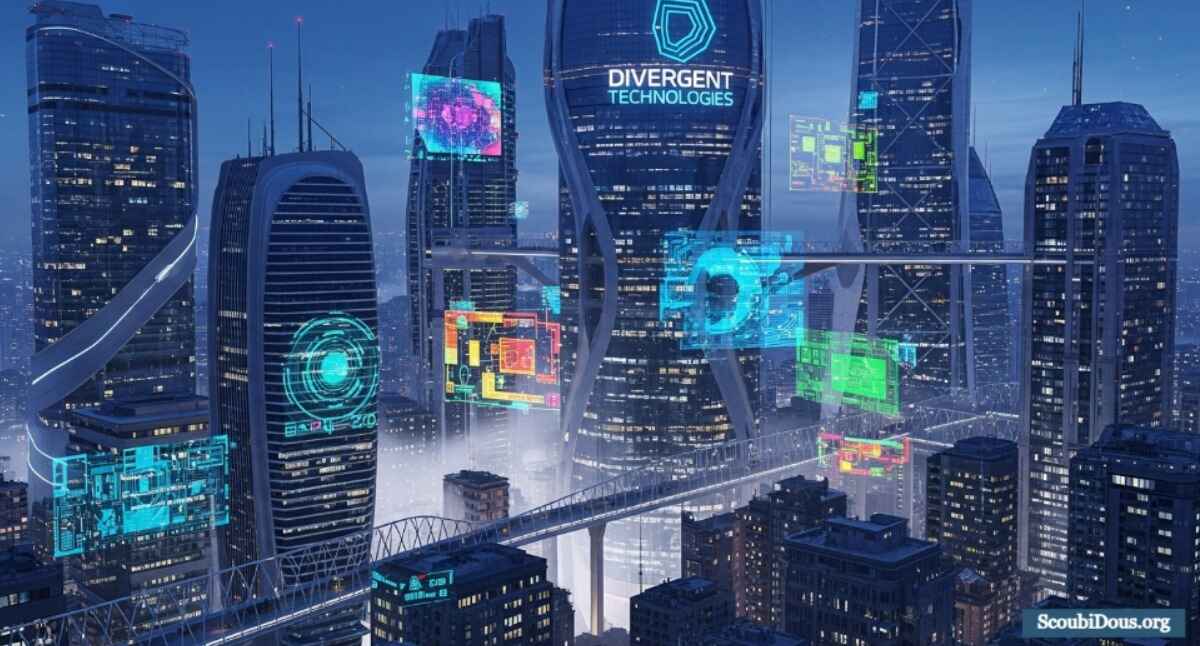
- Invest in Cross-Disciplinary Teams: Foster collaboration among scientists, engineers, and data experts.
- Adopt Scalable Digital Frameworks: Use modular systems that adapt to future technologies.
- Prioritize Ethical Innovation: Build transparent AI and data governance models.
- Leverage Partnerships: Collaborate with research institutions and startups.
- Focus on Continuous Learning: Upskill employees for hybrid technological roles.
Conclusion
Divergent technologies mark a profound shift in how innovation unfolds. They merge the physical, digital, and biological worlds to create a future where human imagination meets limitless technological potential. As industries adapt, those who embrace divergence—balancing creativity, ethics, and strategy—will shape the next era of progress.
The journey of divergent technologies is just beginning, but its impact will echo across every aspect of life, redefining what it means to innovate in the 21st century.
